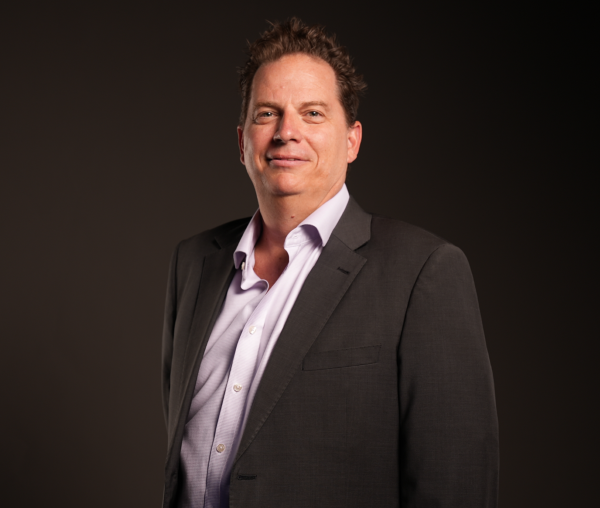By Giles Pendleton, Executive Director of THE LINE

In a rapidly evolving construction landscape of the Middle East, transformative technologies are reshaping industry. From 3D printing to advanced construction techniques, robotics, and artificial intelligence, these innovations are driving efficiency and productivity. THE LINE is an ambitious project of unprecedented scale. It represents an extraordinary engineering feat encompassing a 170-km-long, 200-meter-wide, and 500–meter-high structure, ultimately housing 9 million residents within 34 square kilometers. Giles Pendleton, Executive Director of THE LINE, offers insights into the future of building in the Middle East and the pivotal role of technology in shaping the sector.
“The Middle East construction sector is embracing transformative technologies, enabling us to achieve improved precision, enhanced safety, and minimized environmental impact in construction projects.”
Realizing a transformational project such as THE LINE requires all engineers to be at the forefront of construction innovation. Our avant-garde spirit propels us to reimagine the very fabric of construction, forging a path of limitless possibilities. That’s why we continuously explore new construction methods, engage with industry leaders and invest in research and development to unlock the full potential of emerging technologies. Here are some of the modern construction methods we are deploying as we build the largest structure on Earth:
Modular construction, our secret ingredient to speed and quality. Just like building blocks, we are fabricating building components off-site, ensuring consistent quality control, reducing waste, improving safety and reducing carbon. This approach significantly accelerates construction timelines and delivers high standards of delivery, enabling us to construct with precision and efficiency. It also provides the flexibility to answer future city needs seamlessly by allowing us to plug in and out new modules and city components as required.
Digital twin, a parallel world where we optimize before we build. Think of it as a virtual rehearsal. By creating digital replicas of our buildings and infrastructure, we can simulate and optimize their performance before construction begins. We identify and address design flaws, refine energy efficiency measures, and streamline operations while gaining exceptional transparency to enable predictive maintenance.
3D printing, the sculptor of the future. With 3D printing, we can create intricate structures with unparalleled precision and speed. It’s like a sculptor’s dream, but we use advanced materials instead of clay to bring our architectural visions to life. This technology boosts construction efficiency, reduces material waste, and unlocks new design possibilities that were once unimaginable.
Augmented reality (AR), a vision into the future. With AR, we enhance planning, design coordination and on-site decision-making, allowing us to visualize different design options, detect clashes and collaborate effortlessly with project stakeholders. This technology enhances efficiency and accuracy throughout construction, turning our visions into reality.
Robots, a tireless addition to the workforce. We are advancing the use of robotics and automation to deliver faster, better, and safer construction. One early-use case that our team is accelerating is the automation of rebar cage assembly, where preliminary results demonstrate a 10x improvement of productivity and a reduction in the workforce required for reinforcement by 80%.
Artificial intelligence (AI), Creating the largest and most ambitious structure in the world requires the best of human and artificial intelligence. We aim to use powerful AI capabilities across the urban development lifecycle, from planning and design to construction and eventually into operations and maintenance. This will include optimizing the asset mix and land use, iterative architecture design, efficiently managing costs schedules and the supply chain
Drones, our eyes in the sky. We are deploying unmanned aerial vehicles to provide accurate visual data, enabling us to closely monitor construction activities, identify potential issues and ensure adherence to project timelines. They act as our eyes in the sky, enhancing productivity and safety on our construction sites.
By incorporating these advanced construction methods and technologies, THE LINE project sets new benchmarks for sustainable and innovative urban development. It also catalyzes future construction in the Middle East by acting as a testbed of groundbreaking technologies, paving the way for widespread deployment across the region and beyond.
“Collaborative efforts among industry stakeholders can unlock new opportunities and mutual benefits in adopting transformative technologies for construction projects.”
Many construction projects in the Middle East, including THE LINE, offer significant potential for collaboration, knowledge sharing, and partnership opportunities to adopt transformative technologies. All industry stakeholders must come together to explore and leverage future technologies. For instance, stakeholders can establish research and development centers dedicated to testing and refining emerging construction techniques. By pooling resources and investing in cutting-edge equipment and software, they can create testbeds to pilot innovative solutions tailored to the region’s specific challenges.
Regulatory and government bodies are essential in creating an enabling environment for technology adoption. They can encourage widespread take-up by standardizing practices, streamlining approval processes, and providing incentives for green and smart construction methods. Through collaborative efforts, industry stakeholders tap into a collective intelligence that fuels innovation, knowledge sharing and accelerated adoption of transformative technologies.
“Sustainable and smart city designs, adoption of robotics and automation, and the integration of artificial intelligence are emerging trends shaping the future of construction in the Middle East.”
THE LINE exhibits intelligent infrastructure, eco-friendly design principles, sustainable construction methods, and renewable energy integration. Technology is omnipresent throughout all construction phases. For example, robotics and automation revolutionize construction sites by boosting productivity and ensuring safer working conditions. Robots take on repetitive tasks, reducing the risk of accidents, while automation streamlines workflows for precision and speed. Additionally, artificial intelligence can optimize project management, site safety and data analysis by proactively detecting hazards, predicting risks and enhancing real-time safety measures. It also facilitates predictive maintenance for seamless operation and upkeep. THE LINE also embodies future-proof infrastructure, ready to integrate upcoming technologies, representing a paradigm shift in urban development that never becomes a legacy burden in the future.
“Through technology adoption, digital transformation, and industry partnerships, the Middle East construction sector is unlocking its full potential and leading the way in building excellence.”
Construction technology advancements are reshaping the Middle East’s building industry, paving the way for a sustainable and technologically advanced future. THE LINE project is a remarkable example of sustainability, innovation, and collaboration. The possibilities are endless, and by adopting advanced construction methods, embracing digital transformation, and fostering industry partnerships, the Middle East construction sector can unlock its full potential and continue leading the way in building excellence in this dynamic era.












